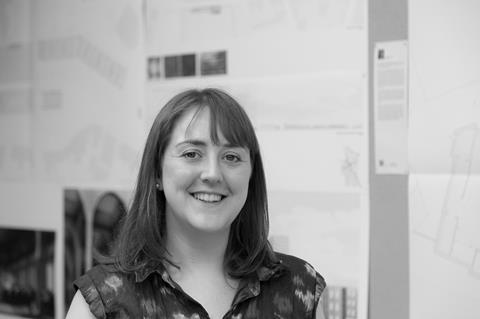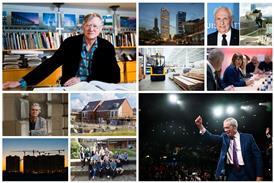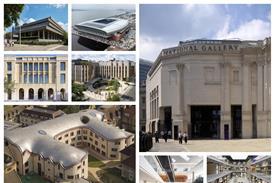Sterile developer-run facilities are no match for the inclusive spaces provided by some faith groups, argues Eleanor Jolliffe

I spent Christmas away from London, and on my train journeys to and from relatives’ homes the tower cranes that landmark London gave way to the church towers and spires so many of our villages and towns are centred upon. It got me to thinking. Religion isn’t something we tend to engage with in planning or masterplanning UK cities – but is that right?
In the UK, according to the 2011 census just 25% of the population identified as of no religion. 59% of the population self-identified as Christian and 5% as Muslim (the next largest religious group). While Church of England service attendance has been reported as in decline, recent figures suggest this decline has stabilised and that church attendance is now showing early signs of growth. These reports do not take into account the growth seen in other Christian denominations such as Orthodox, pentecostal, evangelical and charismatic – all of which have seen noticeable increases in membership.
This isn’t really the space for a treatise of religious statistics but I hope the above at least starts to demonstrate that while religion may a difficult subject to engage with it is one which directly impacts the lives of 75% of the population, and is therefore not one we should ignore.
Religion is also not something we should be afraid to grapple with as we consider and masterplan the future of our cities. Just a brief look at the volunteer sector (worth around £50bn to the UK economy) shows how vital religious groups are to the pastoral care and support of our communities.
The Trussell Trust (the largest UK foodbank charity – you will have seen their boxes in your local supermarket) gave 1.3m emergency three-day food supplies to people in crisis in 2017/2018. It is a Christian charity.
The impact religious spaces have on the fabric of society is greater than the sum of their parts. Planning policy and large developments that disregard this risk creating structural problems in the communities they are trying to build
Kensington & Chelsea council was widely criticised for its response to the Grenfell fire tragedy – and local community groups were widely reported to have filled that need, most notably the local mosque which the Duchess of Sussex has since partnered with to raise money for its community kitchen.
Less obviously tangible or publicised but entirely vital are the thousands of churches and religious groups that offer free counselling, host AA/NA meetings and give space to after-school clubs or parent and baby groups.
Common to all of this is that they are not religious services, and they require no religious affiliation to participate, but they are so often facilitated by religious groups. Regular churchgoers may be in the minority, but the impact religious spaces (and those who run them) have on the fabric of society is greater than the sum of their parts. I passionately believe that planning policy and large developments that disregard this are at risk of creating structural problems in the social dynamics of the communities they are attempting to build.
My experience, both architectural and as a resident of a newly developing masterplan, can attest to the effort developers and development management expend trying to manufacture a sense of community and “place” within their developments. Humans are by nature social beings and, judging from the amount of time and money spent, developers’ spreadsheets must indicate that a sense of place or social network within a community translates directly into sales or repeat tenants.
>> Also read: It takes more than a PR campaign to create a real community
>> Also read: Keeping the faith
To ignore religion entirely is understandable; it is an emotional subject. But I believe that communities have an intrinsic need for places in which they have an opportunity to gather on a regular basis with a common goal. Interactions increase, relationships develop and social needs are met. Traditionally such spaces have been owned by religious groups or figures, though this is not to say that I believe a secular space might not benefit a community as long as it is run by local people on a not-for-profit basis.
But I do not believe that a for-profit, developer-curated space or an access-controlled facilities building will ever serve this purpose. To be successful, this type of space must serve anyone who wants to walk through its doors – something religious spaces, albeit imperfectly, aim to do.
Beyond this, to refuse to engage with the spiritual at all is, I believe, to ignore something of the essence of humanity and will lead to sterile places.
As we plan the cities of the future can we not engage with the intangible and create the moments of delight which allow people to be transported beyond themselves, to feel part of something greater, something other?
It is when we look beyond ourselves that we connect to those around us – to “the greater whole” – and we need space for that in our cities.
















10 Readers' comments